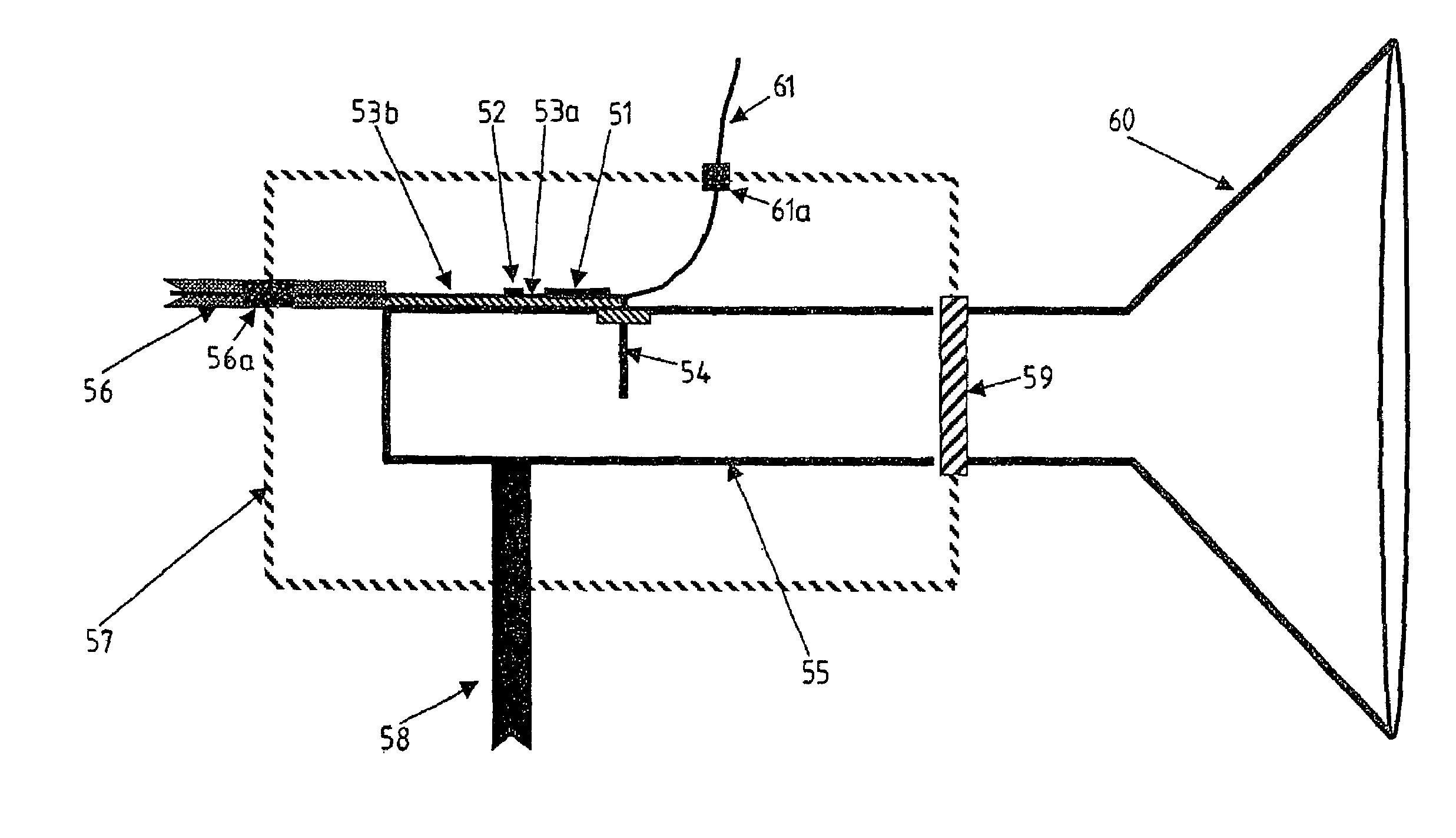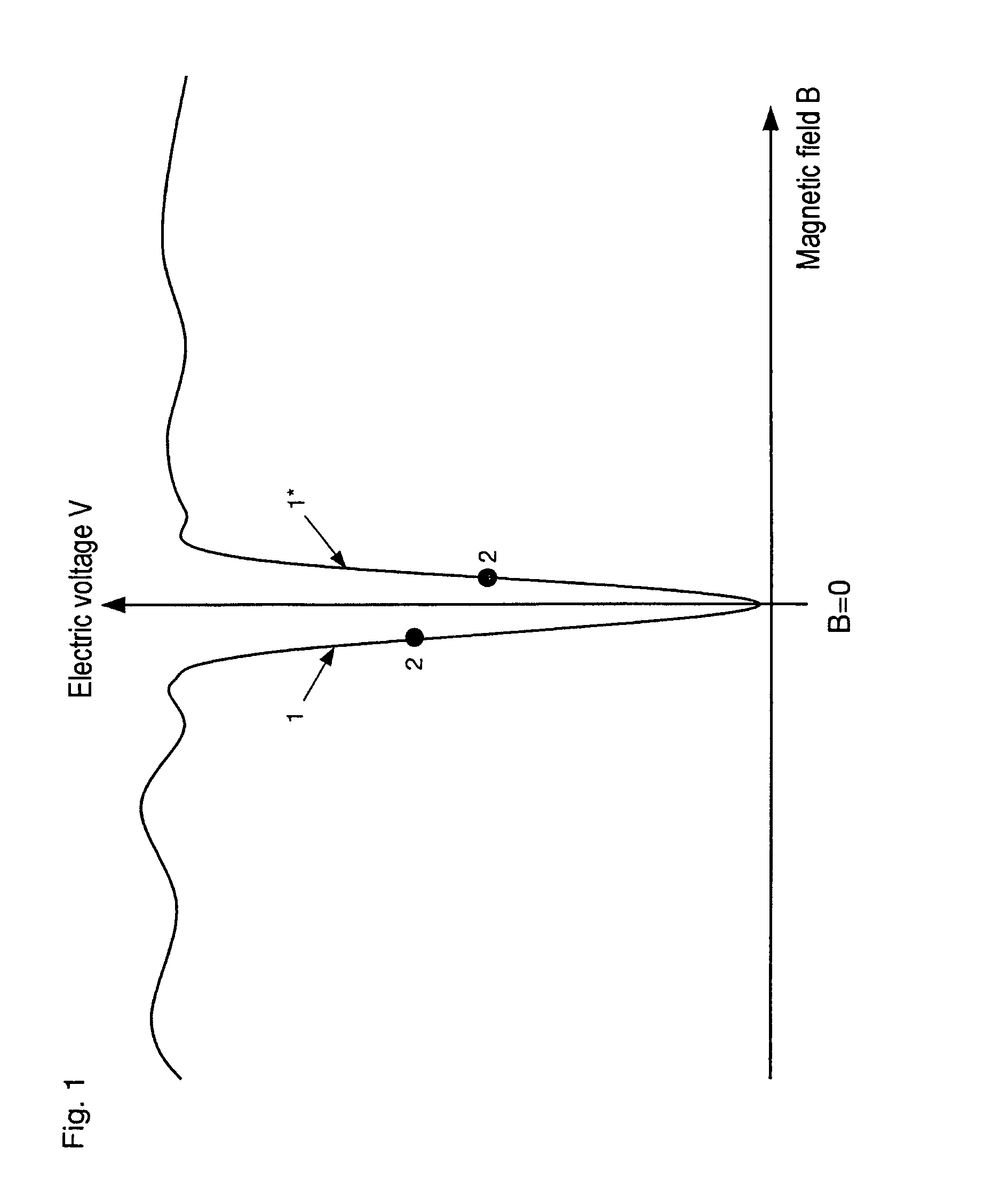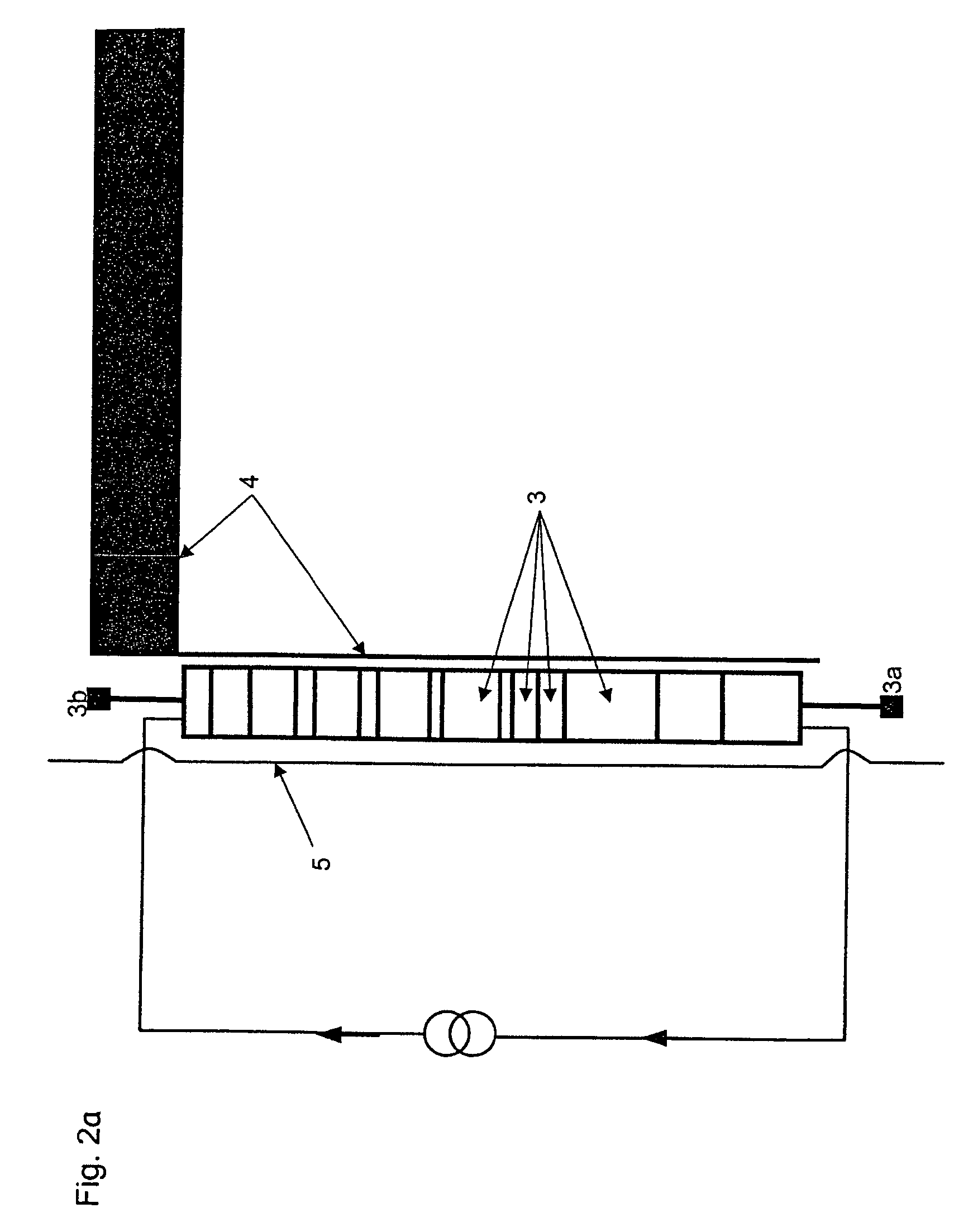Superconducting quantum antenna
a quantum antenna and superconducting technology, applied in the direction of superconducting devices, superconducting magnetic field measurement, antennas, etc., can solve the problems of large induced voltage drop, initial amplification, and severe restriction of the frequency bandwidth within which reception is possible with conventional antennas, so as to achieve the effect of substantially improving the performance of the sqi
- Summary
- Abstract
- Description
- Claims
- Application Information
AI Technical Summary
Benefits of technology
Problems solved by technology
Method used
Image
Examples
Embodiment Construction
[0138]A typical characteristic of a superconducting quantum interference filter (SQIF) is illustrated in FIG. 1. If the SQIF is supplied with an electric current of suitable strength, a voltage dependent on the magnetic field that permeates the SQIF drops across the SQIF. By contrast with the known, conventional SQUIDs, the characteristic is not periodic, but has an unambiguous minimum in the vanishing magnetic field B=0. Since the characteristic is not sinusoidal, as with the conventional SQUIDs or SQUID arrays, the linearity of its edge 1 or 1* is very high. By setting a suitable operating point 2, something which can be performed, for example, by applying a constant magnetic field (control field), the SQIF can be operated with high linearity as an amplifier or as a current-to-voltage converter.
[0139]A typical antenna circuit is illustrated in FIG. 2a. The SQIF 3 is coupled inductively to a primary antenna 4. Upon incidence of an electromagnetic wave, an antenna current flows thro...
PUM
 Login to View More
Login to View More Abstract
Description
Claims
Application Information
 Login to View More
Login to View More - R&D
- Intellectual Property
- Life Sciences
- Materials
- Tech Scout
- Unparalleled Data Quality
- Higher Quality Content
- 60% Fewer Hallucinations
Browse by: Latest US Patents, China's latest patents, Technical Efficacy Thesaurus, Application Domain, Technology Topic, Popular Technical Reports.
© 2025 PatSnap. All rights reserved.Legal|Privacy policy|Modern Slavery Act Transparency Statement|Sitemap|About US| Contact US: help@patsnap.com



